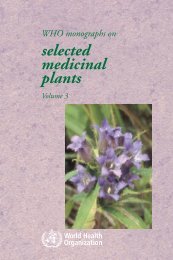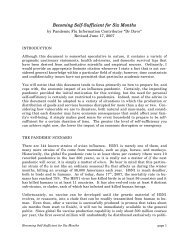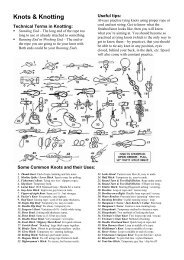You also want an ePaper? Increase the reach of your titles
YUMPU automatically turns print PDFs into web optimized ePapers that Google loves.
Morels and Saddle Fungi<br />
<strong>Edible</strong> and unexcelled: GENUS Morchella<br />
There can scarcely be any doubt that the morels (see "The<br />
Foolproof Four," Figure i, and Plate 4F) are practically without<br />
equals as edible fungi, and in regions where they are common<br />
they are sought avidly by mushroom enthusiasts. In flavor and<br />
texture they surpass both the common cultivated species and<br />
most other wild mushrooms, and attempts have been and still are<br />
being made to grow them commercially — so far without success.<br />
Anyone who succeeded would have a veritable gold mine if he<br />
could keep his secret and avoid glutting the market, because<br />
morels command a good price and always are in demand.<br />
One year they will be found in abundance on certain hillsides,<br />
but they may not reappear there for years. They seem to come<br />
up readily in some burned-over areas, and it is said that at one<br />
time the residents of some parts of Germany made such a practice<br />
of burning the woodlands to encourage the growth of morels<br />
that they had to be restrained by law. Morels are fairly common<br />
in some wooded areas throughout what was known as the Big<br />
Woods in early Minnesota days, as well as in the Central States<br />
and the East, but if sought at the right time they can be found<br />
in abundance in almost every state of the Union.<br />
They appear for a short time only, usually in the early spring,<br />
the season in the northern United States being at its peak during<br />
May. There are several species, but they are all enough alike to<br />
be described as one. The cap is conical, from 3 to 4 inches high<br />
and from i to 2 inches wide at the base. The surface is tan and is<br />
indented with large, irregular pits or cavities, so that the plant<br />
resembles an animal sponge. The stem is white and very delicate<br />
and brittle in texture, breaking readily when handled, and averages<br />
about i inch in thickness and 2 or 3 inches in length. Both<br />
stem and cap are hollow.<br />
90
















